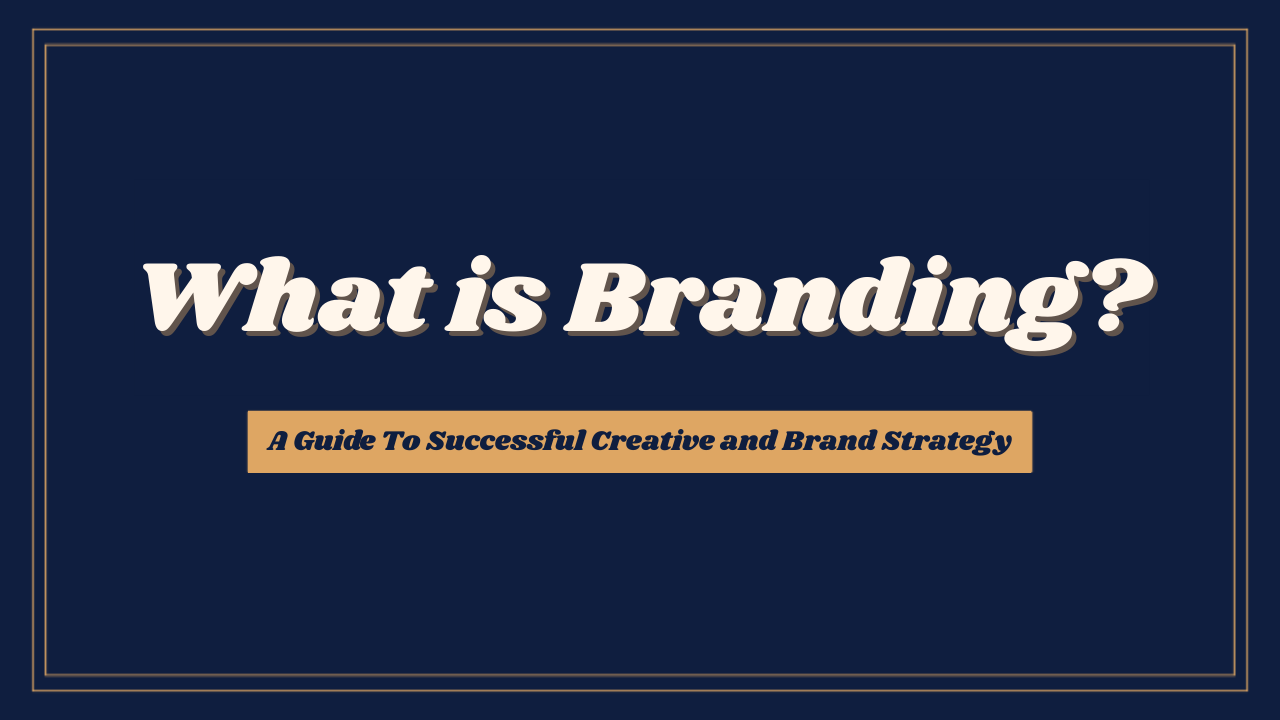Branding is more than just a logo or a catchphrase. It’s the heartbeat of a business, the way people recognize, relate to, and remember a company. Whether it’s boosting product sales, building internal culture, or attracting top talent, branding plays a key role in long-term success.
At G-angle, we’ve spent over 20 years supporting companies in the games and entertainment industries, solving more than 3,500 creative challenges every year. We’ve helped businesses, local governments, and schools strengthen their brands through strategic, engaging content.
In this guide, we’ll explore what branding really means, how it works, and how to build a strategy that drives results.
What Is Branding?
The word “branding” comes from the Old Norse word brandr, which means “to burn,” originally referring to the practice of marking livestock. Over time, this evolved into the idea of a brand as a unique mark of identity, value, and personality.
Today, branding is the process of giving a company or product a distinctive presence in the minds of customers. It’s how you differentiate from the competition and build emotional connections that inspire loyalty. A strong brand tells a clear story and promises a consistent experience.
More than just offering products or services, branding aims to build long-term relationships with customers and secure a lasting competitive edge, contributing to the company’s overall growth.
Branding is both a “promise to the customer” and a clear, concise expression of the company, or product, itself.
Key Elements for Branding and Brand Building
Building a strong brand involves more than design. Here are a few common elements:
- Brand name
- Brand colors and fonts
- Brand logo
- Mission statement/catchphrase
- Country of origin
- Unique selling points
- Mascots or characters
However, these elements only work when supported by consistency, authenticity, and a deep understanding of your audience. A brand must feel coherent across all touchpoints, from website to customer service.
The Three Types of Branding
Branding isn’t one-size-fits-all: depending on the target audience and purpose, it generally falls into three main categories:
- Internal Branding
- Product/Business Branding
- Recruitment Branding
Each type has different goals and targets, which means the strategies and methods used will vary significantly.
The key is to assess your company’s current situation and goals, determine which type (or combination) of branding is most suitable, and tailor your approach accordingly for the best results.
Internal Branding
Internal branding focuses on building a strong corporate culture by helping employees and other internal stakeholders deeply understand the value and meaning of the brand.
By strengthening unity within the organization and fostering a sense among employees that they are part of the brand, companies can improve overall performance and encourage pride in individuals’ work.
Since a brand is essentially a “promise to the customer” and a reflection of the company (or product) itself, when each employee is able to embody and fulfill that promise, it leads to stronger trust and loyalty from customers.
Product/Business Branding
When people hear the word “branding,” many first think of branding related to products, services, or business operations.
Product or business branding is the process of highlighting the unique value of a product or service, establishing a distinct brand image, and differentiating from competitors. This helps drive the growth of both the product and the business.
It’s not just about eye-catching packaging or standout features: the brand must also communicate the value and experience it offers.
A strong product brand can give you a competitive edge during a customer’s decision-making process, and help win repeat business and build a loyal fanbase.
Recruitment Branding
Recruitment branding involves strengthening a company’s brand image in order to attract job seekers and encourage them to choose your organization.
It means identifying what makes potential candidates feel they want to work someplace and creatively communicating your company’s vision and values to draw in top talent.
However, simply hiring isn’t enough. If retention is low, the branding effort falls short. That’s why it’s also important to create a workplace environment where employees can feel proud of the brand they belong to and have opportunities to grow.
In that sense, recruitment branding is deeply connected to internal branding, as both are vital to building a strong foundation of talent that supports long-term business growth.
The Difference Between Branding, Marketing, and Promotion
When thinking about branding, it’s easy to get it mixed up with promotion or wonder how it relates to marketing strategy.
While branding, marketing, and promotion are often discussed together and are closely connected, each plays a distinct role:
Branding
Activities aimed at building unique value for a company or product.
You can think of it as efforts to create a loyal fanbase.
Marketing
Comprehensive activities focused on creating a system that drives sales.
Compared to branding, it often involves more sales-driven thinking.
Promotion
Activities that boost awareness of a product or service and stimulate the desire to buy.
It’s one element that supports both branding and marketing strategies.
In short, branding serves as the foundation for differentiating a company or product through the creation of a strong image, which then supports marketing strategies and promotional efforts.
Since branding contributes to long-term business growth, it can also be seen as a part of the overall marketing strategy, working to build fans as a way of creating a system that sells.
Benefits and Considerations of Branding
Now that we’ve covered the definition and role of branding, let’s take a closer look at the key benefits it offers, as well as important points to keep in mind when developing a branding strategy.
Key Benefits of Branding
Branding offers several key advantages, including the following three:
1. Builds Trust and Reduces Advertising Costs
A strong brand image naturally builds customer trust in a company or product.
Once customers trust a brand, they are more likely to continue using it voluntarily and are also more inclined to try other products or services from the same company.
As a result, businesses can secure stable revenue without the need for excessive advertising, ultimately lowering their overall promotional costs.
2. Sets You Apart from the Competition
A unique brand worldview or story can be a powerful tool for standing out from competitors.
By establishing a strong brand identity, customers become less focused on comparing prices and more focused on the value and emotional experience the brand provides.
This helps businesses avoid getting caught up in price-driven competition.
3. Boosts Shareability Among Younger Audiences
With the rise of social media, young consumers now have access to vast amounts of information.
Visually impactful elements like mascot characters or content with strong messaging have high potential to generate buzz among younger audiences and be widely shared on social platforms.
This can lead to greater natural brand awareness among potential customers and help further solidify the brand’s presence.
Common Branding Pitfalls
We will explain three points you should pay particular attention to when considering branding.
① Rushing Rebrands
Rebranding, which completely refreshes a company’s brand image, can be an opportunity to connect a company to a new stage of growth, but it also carries the risk of destroying the brand image that has been cultivated up to now. Based on careful market analysis and customer research, it is important to proceed carefully and take your time to avoid confusing existing customers with excessive changes.
② Ignoring Customer Reactions
In branding, it is essential to listen to customer feedback and reactions and make repeated improvements.
No matter how excellent your creative or advertising strategy, if your brand message is far removed from what your target audience wants, its effectiveness will be halved.
By always listening to real voices, such as customer satisfaction surveys and feedback on social media, you can discover new and unexplored strengths, leading to the establishment of a better brand.
③ Chasing Trends at the Expense of Identity
Following the latest trends is important when it comes to appealing to younger generations, but you must avoid being too swayed by trends and losing sight of your brand’s core values.
If a brand’s value and uniqueness become unclear, it becomes difficult for customers to understand “who this brand is” and “what this brand is trying to communicate.”
It is important to embrace trends in a complementary way while staying true to the brand’s core values.
Why Creativity Matters in Branding
More and more people are considering using creative elements such as illustrations and videos to shape their branding activities.
Here, we will introduce the creative effects on branding, including collaborations with famous IPs, sound logos, the appearance of official corporate VTubers, and anime commercials.
Visual Design
Visual design is a powerful element in shaping a brand’s image in the sense that it conveys the brand’s worldview and values.
By unifying visual elements such as logos, colors, and fonts, customers can instantly recognize the brand, helping to increase and solidify brand awareness.
In addition, impressive visuals are easy to remember, so you can expect to gain fans and naturally lead to repeat purchases.
Animation and Illustration
Compared to still images and text, animations and illustrations have the power to appeal to emotions.
In branding, where conveying things as they are is not always effective, the wide range of expression in animation and illustrations is an important point.
By utilizing content that uses animations and illustrations for industries and occupations that tend to have negative images such as “it seems difficult,” or B2B products that are difficult to explain, you can make companies, products, and services more familiar and portray their appeal more directly.
A wide range of expressions through animation and illustrations has the power to strengthen connections with your target audience.
Music and Audio Branding
Sound triggers memory, and sound logos as well as original music are often used by famous companies throughout the world. In Japan, when people see the familiar phrase “Anata to, conbini ni, Famiri Mato” (Your Convenient Partner, FamilyMart), most people instantly think of the distinctive jingle that welcomes you when you enter one of their stores.
Music can bring a unique audio aspect that strengthens brand image, which cannot be achieved through flashy visuals and posters alone.
Distinctive melodies and jingles become ingrained in the memory when heard repeatedly, creating a natural attachment for the target audience.
With the spread of voice assistants and subscriptions, brand awareness strategies that utilize sound are gaining more and more attention.
How to Build a Branding and Creative Strategy
Creative branding can work for many types of audiences, but after creating it, many teams struggle with how to use it effectively.
Here we will introduce how to create an effective branding and creative strategy.
① Analyze Your Company and Audience
In order to create an effective branding strategy, you first need to conduct a basic analysis to accurately understand your company’s position, target demographic, and market environment.
Understanding your company’s strengths and weaknesses through identifying internal resources, researching existing customers, and analyzing competitors will form the foundation for your subsequent brand strategy.
② Clarify Your Brand Identity
Brand identity clearly defines what a brand aims to be and what values it provides.
In other words, it is the role that your company plays in society and the value of your products and services in the market.
We’ll take a look at a few real world examples where creative production directly intertwines with brand identity, and how it creates a consistency for all subsequent branding/marketing activities.
③ Keep Visuals and Messaging Consistent
Following the basic analysis in step 1 and the brand identity described in step 2, the last step is to unify visual elements such as the logo and brand color, as well as general messaging through a brand voice and catch phrases.
By presenting consistent visuals and messaging at all points of contact with your target audience, you can give customers peace of mind and trust, creating deeper empathy.
As we mentioned earlier, make sure to be mindful of the potential of brand distortion that comes from excessively chasing trends. Losing consistency can lead to negative branding, so consistency is the key to a brand’s success, especially now that multi-channel communication, especially through social media, has become the norm.
④ Create Targeted Content
We will now move on to creating creative content that represents the brand elements defined thus far, and how to effectively develop that content.
First, when considering what kind of creative content to use, it is important to analyze the interests and behavioral patterns of your target audience and create content that appeals to them.
For example, if you are targeting young people, for whom social media is the norm for communication and gathering of information, you should consider a strategy that focuses on social media and the internet and incorporates trending elements to increase virality.
On the other hand, if you are targeting people in their 60s or older, videos that are too fast-paced or have a design with high contrast may cause them to abandon the video before they fully understand the content. You will need a strategy that uses a calm tempo and design, and aims to increase awareness on TV and in-person.
In this way, you can maintain a consistent, established brand identity while producing high quality content that meets the needs of your target audience.
⑤ Measure and Adapt
Regular measurement of effectiveness is essential to determine whether your branding initiatives are working.
In order to measure the effectiveness of branding, it is important to set KPIs (Key Performance Indicators) and regularly analyze data, such as the number of impressions on social media.
Update your strategy by measuring various indicators such as customer surveys, conversions, and sales, and evolve your brand in a more optimal direction.
Real-World Creative Branding Success Stories
So far, we have introduced the basic effects of incorporating creativity into branding and strategic best practices.
In this section, we will introduce some successful examples of branding and creativity.
Starbucks

In Japan, Starbucks has successfully branded themselves through the concept of a “third place,” or in other words, positioning their company as a place of relaxation outside of the home or workplace.
Not only does it offer high-quality coffee, but the warm, comfortable store design and consistency among the logo, cup design, background music, and other elements help to create a consistent brand image.
Providing this comfortable environment offers a special experience for their customers.
McDonald’s

The McDonald’s “I’m lovin’ it” sound logo is recognized worldwide, along with the melody “Ba-da-ba-ba-ba.”
The catchy phrase and distinctive, short melody are universal and have established the brand to the point that many people instantly think of McDonald’s the moment they hear it.
This is a successful example of how combining the brand message with a unique sound can leave a strong impression on customers.
Michelin Tires

Bibendum, also known as the Michelin Man, is a strong example of a character signifying a “reliable partner” who personifies safety and quality; a successful example of character branding that has earned familiarity and trust around the world, as a symbol representing the world-famous Michelin Guide.
When the Michelin Man first appeared, at a time when only the upper class could afford to own a car, he was modeled in a way that appealed to that target audience, and his appearance has slowly changed over the years to accommodate changes in market perception.
Taisei Corporation
Utilizing the world-wide of appeal of anime has become widely popular for many companies throughout Japan. This animated video conveys the general flow of a construction project within around 30 seconds, which is why it has left such a lasting impression on Japanese customers throughout the country.
In addition to the beautiful animation created by a famous director, this is an example of how a company’s image can be improved while revamping the perception of an entire industry through creative production.
Kyoei Forging Works
This is a successful branding example from Kyoei Forging Works, which solved recruitment challenges in the highly competitive forging industry of the Tsubame-Sanjo area in Japan.
Kyoei Forging Works used this as an opportunity to appeal to young people who had interest in the industry, producing a corporate commercial as an action-packed robot anime that appealed to this target demographic.
This commercial was highly acclaimed, and led to a significant increase in awareness within the city, as well as the number of applications doubling compared to the previous year.
■ Project Portfolio Link
Kyoei Forging Co., Ltd. Branding cel animation
■ Related Articles

Tamaya Pawn Shop
Tamaya Pawn Shop faced two key challenges: increasing awareness among younger audiences and improving the overall image of pawnshops as a service.
To tackle this, they redefined the traditional concept of a pawnshop through anime, usually seen as “handing over items for quick cash,” into the more positive and engaging idea of safekeeping items until the moment you’re ready to welcome them back. Building on this fresh perspective, they produced a series of anime commercials featuring epic fantasy-style animation, which resulted in visually captivating stories that not only elevated the brand image but also connected with younger generations in a creative and emotionally resonant way.
Through strategic YouTube ad placement, the campaign’s total views surpassed 1 million. This exposure drove a noticeable increase in usage among customers in their 20s and 30s, a demographic traditionally less engaged with pawnshop services. Most importantly, the number of pawned items exceeded the previous year’s results for the first time in over a decade, marking a significant milestone in Tamaya Pawn Shop’s history.
Ready to Strengthen Your Brand?
For over 20 years, G-angle has been a creative partner to the games and entertainment industry, tackling more than 3,500 unique challenges each year. Branding plays a crucial role in helping companies grow, but it is not a simple task. It requires thorough analysis, a clear vision, and a strategy that stays consistent with your brand’s identity from start to finish.
We start by listening. Understanding each client’s goals and unique pain points allows us to create a tailored branding strategy from the ground up. From there, we bring ideas to life through end-to-end creative production, including anime, illustration, music, and voice recording. Adding creative elements makes your brand message easier to remember and more likely to resonate with your audience.
Our strength lies in blending these elements into a powerful, cohesive strategy that delivers tangible results. If you’re looking to elevate your brand through bold, creative solutions, G-angle is ready to help.




